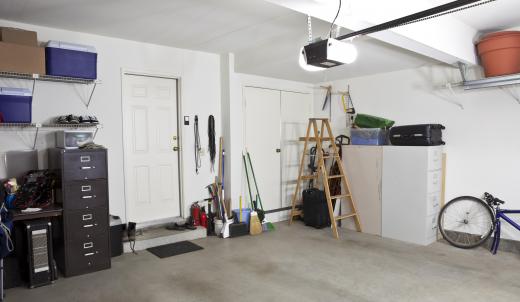Rafter insulation is a material used to insulate a home's roof or attic. The heat in a home flows from the warmer rooms to the cooler areas. In cold weather, warm rooms often lose heat to uninsulated attics and garages. When temperatures soar, heat flows from the rafters or attic into a home's interior, causing the cooling system to work overtime.
Rafter insulation, also called attic insulation, is a simple way to provide heat flow resistance. Rafter insulation also serves as damage control against moisture. The better the insulation coverage, the lower the energy bills.

Many types of home insulation are available. Homeowners can choose from a vast array of materials to fit the area they want to insulate. Fiberglass is not the only option. Increased energy-efficiency can be gained from insulation constructed from wool and natural fibers, foam board, concrete and even straw. Some materials, such as foam board, provide a high thermal resistance.
Rafter insulation installation methods vary. Some types of insulation, such as blanket rolls or reflective foil-faced systems, can be easily installed by a homeowner. Other insulation materials required professional installation or equipment, including concrete block, structural insulated panels (SIPs) and rigid fibrous insulation.
Insulation's effectiveness is measured by a number called an R-value. This number measures how efficient the insulation is at resisting heat. A higher number equals greater efficiency. Adding multiple layers of insulation means adding together the R-values of each layer. The more layers, the higher the number and the more heat flow resistance. Many factors are considered when calculating an R-value, including insulation material, installation location and the method of installation.
Rafter insulation is most energy-efficient when both the rafters and the entry to the attic are insulated. Air sealing the hatch, kneewall door, or pull-down attic stairs, as well as gaps between frames and insulation, stops more air leaking to the outdoors. Homeowners can gauge air leakage by having an infrared scan performed. Typically, older-style fiberglass insulation does not cover the colder areas of an attic, such as gable ends, or the perimeters of an attic. Blown-in insulation, using special equipment, can fill gaps in these cases.
Rafter vents should be installed in attics where insulation covers the floor out to the eaves. These vents provide a place through which air can move. Rafter vents remove hot air during warm-weather months and moisture from condensation during colder months. Usually, rafter vents are simply stapled to the roof decking between rafters and run from the attic ceiling to its floor.

